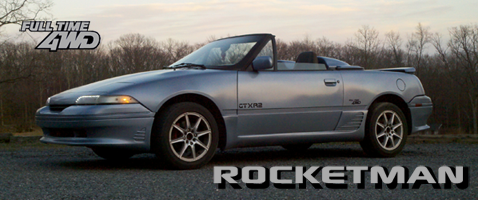They say it helps the 'rings to seat'....I don't really know any more about it.
Announcement
Collapse
No announcement yet.
88LX - Carb To Fuel-Injected?
Collapse
X
-
-
I read the hyperlinked article. Very interesting. Didn't know they did this. 2 questions to you guys out there....Originally posted by BigElCat View PostThey say it helps the 'rings to seat'....I don't really know any more about it.
http://www.hastingsmfg.com/ServiceTi...efinishing.htm
1) How common is this on engine rebuilds?
2) If they do this routinely on engine rebuilds, why don't they do this on cylinders right out of the factory? Or do they?Last edited by Twistiva; 03-18-2014, 12:43 PM.88L - 'Twistiva' - 'The Fusion of Man and Machine'
88LX - 'Laztiza' - Future Resurrection Project
91L - 'Mistiva' - My Daughter's DD
93L - 'Vextiva' - Airport Car
Comment
-
As far as I know it is to help retain oil on the cylinder walls for lubricationOriginally posted by Twistiva View PostOK, interesting. Anybody else got any idea as to why it's a smart thing to have a "cross/hatch" pattern on a cylinder wall?1991 Mercury Capri XR2 "GTXR2" BPT Swapped AWD Conversion

Rocketchips!
High Flow B3/B6/BP VAF Adapters for sale!
Bolt-on Weber Carb Adapters!
Comment
-
Yes, this is always done on any engine. New or rebuilt. If it isn't done oil wont evenly coat the cylinder walls ( like said before ) and the rings need something to "bite into". If the bore was smooth or a mirror finish then the oil wouldn't evenly coat the cylinder and the pistons could seize in the bore. As well as the rings wont properly ride against the smooth surface and not "grab" it and seal properly.Originally posted by Twistiva View PostI read the hyperlinked article. Very interesting. Didn't know they did this. 2 questions to you guys out there....
1) How common is this on engine rebuilds?
2) If they do this routinely on engine rebuilds, why don't they do this on cylinders right out of the factory? Or do they?
Comment
-
The person building my motor is very good. He's built high hp Mustangs in the past, so I have confidence in his work.Originally posted by BigElCat View PostI would use one those bottle brush style cylinder hones to break the glaze, and leave a cross hatch pattern on the cylinder walls.
I assure you he's in North Carolina not Indiana. He and another friend are working on some R&D stuff on both my motors.
No DAE parts in this gas mileage build.Last edited by Team Lightning; 03-20-2014, 10:05 PM.Jerry
Team Lightning
Owner of Team Lightning
90 L "Peewee" B6D. Bought new May 16,1990
92 L Thunder BP G5M-R Turbo B6T electronics. Jan 2016 FOTM winner SOLD
93 L Lightning. BP
Not a user of drugs or alcohol, Just addicted to Festiva's
Comment
-
Just a little side "Blip" here that goes along with pistons,sealing and lubrication. On two stroke nitro-methane engines.There are no rings,cross hatching or oil in the crankcase. But they can survive 30,000 rpm all day long.They solely rely on the piston sleeve taper or "Pinch" @ TDC for sealing.And a mixture of synthetic/caster oil in the fuel for proper lubrication. So you can totally see how important cross hatching is in a four stroke. And why correct fuel metering is vital to any engine's longevity(on a two or four stroke). Overly rich mixture wash's away the oil on the cylinder walls in a four stroke.Overly lean in a two stroke will result in scoring and premature wear on ALL internal moving parts (not just cylinder walls).
If you were required to prioritize the benefits of cross hatching a four stroke. "Oil Retention" would be first followed by ring sealing IMO. Interesting how this thread started out from a question concerning fuel control via carb/efi.Some people like to read fiction,I prefer to read repair manuals. Weird I know-
Henry Ford: "Failure is the opportunity to begin again more intelligently"
Fuseable Link Distribution Block repair link
Comment
Comment